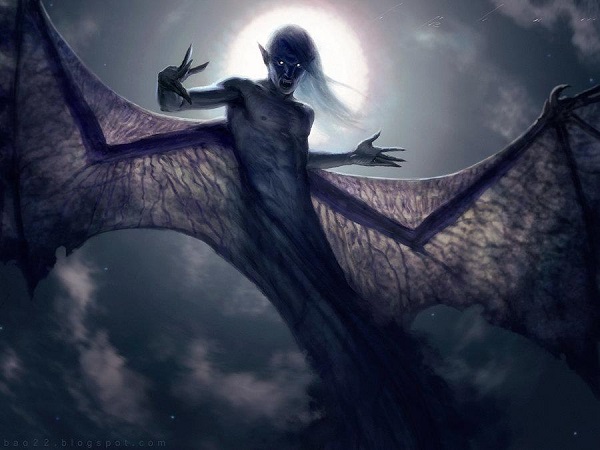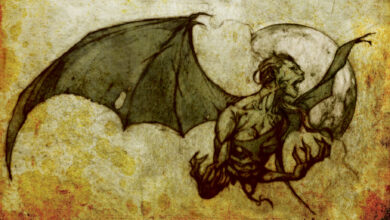
Capiz Aswang: The Reality Behind the Terrifying Myth
The Aswang is one of the most infamous creatures in Filipino folklore, a shape-shifting monster said to prey on humans, particularly pregnant women and children. Among the many provinces that claim to have sightings and encounters with this nightmarish entity, the province of Capiz stands out as the so-called epicenter of Aswang legends. Over the years, Capiz has become synonymous with these tales of supernatural horror, earning a reputation that has both intrigued and terrified people for generations.
But where did the legend of the Capiz Aswang originate? And why has Capiz been so strongly associated with this terrifying creature?
The Aswang: A Brief Overview
The Aswang is a broad term in Filipino folklore used to describe a variety of shape-shifting creatures, including vampires, ghouls, and witches. Unlike Western vampire myths, the Aswang has many forms: it can appear as a beautiful woman during the day and transform into a terrifying monster at night. Some versions of the creature can morph into animals like dogs, pigs, or birds, while others have the ability to detach their upper bodies and fly in search of their next victim.
Though stories of the Aswang can be found throughout the Philippines, Capiz is often cited as the home of the most feared and powerful Aswangs. Many in the Philippines believe that Capiz is a place where witches and other supernatural beings live among the ordinary populace, hiding in plain sight until nightfall when they reveal their true nature.
Why Capiz? The Origins of the Legend
The legend of the Capiz Aswang likely began during the Spanish colonial era when rural areas in the Philippines, including Capiz, were seen as isolated and mysterious. Capiz, located in the Western Visayas region, was a place of dense forests and secluded villages, far removed from the urban centers of the time. This isolation may have contributed to the development of superstitions and folklore, as well as a fear of the unknown.
During the Spanish occupation, Christian missionaries tried to convert the local population, but many indigenous spiritual practices persisted. Some scholars suggest that the Aswang myth may have emerged from a misunderstanding or demonization of these local traditions. Indigenous healers, herbalists, and shamans—known as babaylans—were sometimes viewed as witches or practitioners of dark magic, especially by outsiders. Capiz, known for its strong tradition of healing and spirituality, may have been seen as a place where these “witches” thrived.
Another possible explanation for Capiz’s association with Aswangs is its colonial history. Some historians believe that the Spaniards used the Aswang myth as a tool to scare local populations and deter rebellion. By fostering fear of the supernatural, colonizers could maintain control over remote provinces like Capiz.
The Aswang in Modern Capiz
Over time, the Capiz Aswang became more than just a myth. The reputation of Capiz as a haunted province spread far and wide. Even today, it is not uncommon for people to joke or speak in hushed tones about “witches” and “Aswangs” when they hear the name Capiz.
In Capiz, many residents have learned to live with the province’s eerie reputation. Some embrace it as part of the region’s identity, while others distance themselves from the myths, insisting that the tales of the Capiz Aswang are nothing more than superstition.
However, the legend persists. Stories of mysterious deaths, strange creatures, and eerie happenings continue to fuel the belief that Capiz is the home of the Aswang. Reports of nocturnal sightings, unexplained illnesses, and strange animal behavior are often linked to the Aswang in local lore. These stories are usually passed down through generations, maintaining the myth’s grip on the imagination of Filipinos.
Common Traits of the Capiz Aswang
What distinguishes the Capiz Aswang from other regional variations? While the Aswang is a versatile creature that takes on many forms depending on the region, the Capiz version is known for several distinct traits:
-
Shape-Shifting: The Capiz Aswang is often described as having the ability to shift into various animals, particularly black dogs, pigs, or birds like the tik-tik, whose eerie cry signals the presence of the creature nearby.
-
Detachment of the Torso: One of the most chilling forms of the Aswang is the manananggal, a vampire-like creature that can detach its upper body from its lower half and fly through the night in search of its prey. This version of the Aswang is said to haunt rural areas and forests, especially in Capiz.
-
Human Disguise: The Aswang is believed to blend in with ordinary people during the day, living seemingly normal lives in local communities. They are said to be quiet and secretive, often reclusive individuals who only reveal their monstrous nature at night.
-
Preference for Pregnant Women: One of the most terrifying aspects of the Aswang is its rumored craving for unborn children. It is said to use its long, proboscis-like tongue to suck the blood of pregnant women while they sleep, a detail that has made the creature especially feared by expectant mothers.
Aswang Myths in Pop Culture
The Capiz Aswang has become deeply ingrained in Filipino culture, not just in folklore but also in modern media. Stories about Aswangs appear in Filipino movies, TV shows, and books. These portrayals often depict Capiz as the haunting backdrop where these creatures originate. Popular films like “Tiktik: The Aswang Chronicles” and episodes of “Shake, Rattle & Roll” have brought the myth to life for contemporary audiences, contributing to the ongoing fascination with the Capiz Aswang.
READ: Holy Week Mythical Creature
In many ways, the Aswang has become a symbol of the unknown fears that lurk in the shadows of Filipino culture. Whether it’s the fear of illness, death, or betrayal, the Aswang embodies the anxieties of rural life, where danger often feels close at hand.
The Reality Behind the Myth
While the stories of the Capiz Aswang have persisted for centuries, there has been no concrete evidence to prove the existence of these creatures. Many believe that the Aswang is nothing more than a myth born out of fear, misunderstanding, and superstition.
Nevertheless, these tales continue to captivate and scare, adding a mysterious and eerie dimension to the cultural heritage of Capiz. For locals and tourists alike, the Aswang legend remains a compelling part of the region’s identity, blending history, folklore, and a touch of the supernatural.
The legend of the Capiz Aswang is one of the most enduring and captivating myths in Filipino folklore. While it may have originated from colonial misunderstandings and local superstitions, the tale has taken on a life of its own, becoming part of the cultural fabric of Capiz. Whether you believe in the Aswang or see it as a story passed down through generations, one thing is certain: the legend of the Capiz Aswang continues to live on, lurking in the dark corners of the imagination and reminding us of the power of myth in shaping local identities.


